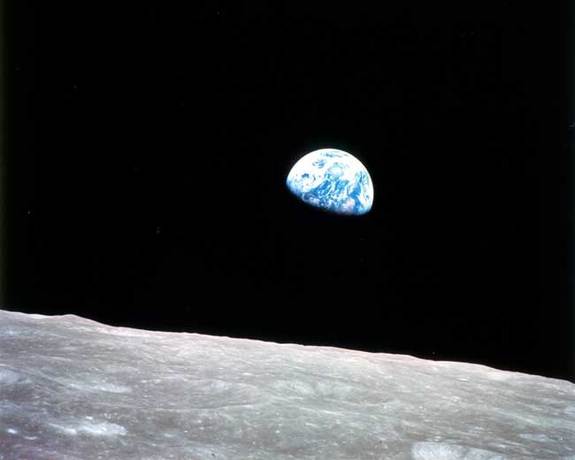Oxygen Oases May Have Supported Early Ocean Life

Oases of oxygen apparently existed in the primordial oceans for hundreds of millions of years before the gas made its debut in our atmosphere, researchers discovered.
These findings may shed light on what the first life that used oxygen was like.
Although life-sustaining oxygen gas currently makes up about a fifth of the air we breathe, very early in Earth's history, it was rare — if not completely absent — in the primeval atmosphere. It was only with the "Great Oxidation Event" nearly 2.3 billion years ago that this gas, whose molecules are each made of two oxygen atoms, began making a measurable dent in our atmosphere. This "O2" in turn stimulated the evolution of air-breathing life and ultimately the complex organisms that we are familiar with today.
However, about a decade ago, geochemists discovered rocks containing fossil steroids, an essential ingredient of some organisms' cell membranes that require oxygen to make. Since these fossils dated back 300 million years before the Great Oxidation Event, this led to a debate over whether oxygen appeared in the atmosphere earlier than before thought.
Now researchers suggest oxygen was present on Earth 300 million years before it spiked in the atmosphere, but at extremely low concentrations that would have left very slight traces in ancient rocks. Instead, the gas may have lurked in oases in the ocean, enough to feed oxygen-loving "aerobic" microbes.
To learn more about what oxygen levels were like in the past, scientists experimented with yeast. This single-celled organism naturally uses oxygen in combination with sugars to generate a kind of steroid known as ergosterol, a cousin of cholesterol. Yeast can also grow without oxygen, as long as it has a source of ergosterol to draw on. [Cooperating Yeast Provide Clue to First Complex Life]
The researchers found yeast could generate ergosterol even with only vanishingly small amounts of the gas, about 50,000 times less than is currently found in surface seawater.
Sign up for the Live Science daily newsletter now
Get the world’s most fascinating discoveries delivered straight to your inbox.
"Steroids, whose fossils can be found in rocks dating from before the first signs of atmospheric oxygen, can be made at very low but nonzero O2 levels," researcher Jacob Waldbauer, now a postdoctoral researcher at the University of Chicago, told LiveScience. "Those trace levels of oxygen could have been present in the ocean long before oxygen started to accumulate in the atmosphere."
This suggests that early ancestors of yeast might have been similarly resourceful, supporting the idea that oxygen-based life might have been around long before the Great Oxidation Event, making use of whatever miniscule amounts of oxygen were in the oceans well before the atmosphere even saw a trace of the gas.
"The time at which oxygen became an integral factor in cellular metabolism was a pivotal point in Earth history," said researcher Roger Summons, a biogeochemist at MIT. "The fact that you could have oxygen-dependent biosynthesis very early on in the Earth's history has significant implications."
"Likely, oxygen-tolerant organisms learned to like oxygen, or even need it, before it reached any appreciable concentration in the oceans or atmosphere," Summons told LiveScience.
The investigators speculated that microbes like cyanobacteria — so-called "blue-green algae" that live at the ocean surface — evolved the ability to produce oxygen gas via photosynthesis long ago. However, instead of building up in the oceans, much of this oxygen may have at first been rapidly consumed by early aerobic organisms, with the rest being consumed by chemical reactions with iron and sulfide that spewed out of underwater volcanoes. Eventually, however, there was enough oxygen to seep into the atmosphere, initiating the Great Oxidation Event.
"We know all kinds of biology happens without any O2 at all," Waldbauer said. "But it's quite possible there was a vigorous cycle of O2 happening in some places, and other places it might have been completely absent."
Waldbauer, Summons and their colleague Dianne Newman detailed their findings online Aug. 8 in the Proceedings of the National Academy of Sciences.
Follow LiveScience for the latest in science news and discoveries on Twitter @livescience and on Facebook.










